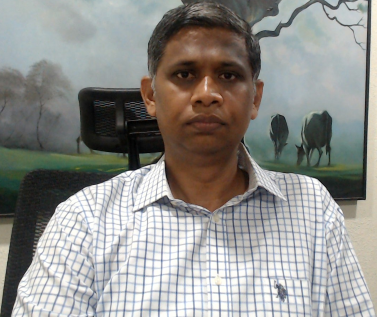At Gurujada, we are attempting to decode how to learn.
Until 20 years back, we locked a teacher and students in a room, made the teacher chalk-and-talk and expected the learning to be an automatic outcome. After numerous attempts of applying technology to enhance the process, here we are in 2022, where we lock a teacher and students in a Zoom session and expect the learning to happen. We have come a full circle indeed.
From stitching a bunch of videos as a course to numerous engagement tools - from using artificial intelligence to predict dropouts to live coding environments, a lot of research went into building THE LEARNING FRAMEWORK.
We envisage a Learning framework which if configured correctly, will significantly enhance the effectiveness of teaching learning process. We believe there are three core elements that are mandatory for any learning to happen.
- Self drive
- Teaching intervention
- Peer network
For effective learning to happen all three parameters are mandatory. Depending on a learners aptitude, attitude and persona, the proportion of these parameters might vary - for one, it can be 40% self drive 30% teaching intervention, 30% peer network, while for another it can be 60% self drive, 35% teaching intervention and 5% peer network. But in any case, we’ll always see a relationship between these parameters and an individual’s learning curve.
The first and the most important of these parameters is Self drive. It is the learner’s desire to learn. If there is no desire, then even the best of teachers or the peer group can’t ensure that learning happens.
Self drive is always propelled by a deep seated need or an interest. The need might be getting a job, a promotion, an increment or getting something done. And interest might be to learn a new skill, to switch careers, to do a task well or just to be informed.
But self drive in isolation is not enough.
You might observe that though there is a lot of self drive, many won’t be able to complete the courses. This is because whenever there is a challenge while going through the course, be it a bug or a version change or a new concept that we can’t understand, a lot of self doubt creeps in and learners feel like giving up. If at this point, there was an expert to handhold us and guide us, to give us that gentle nudge and encouragement by clarifying our doubts, and infuses confidence, the chances of course completion would be pretty high.
Having said that, learners wouldn’t need 100 percent of the teachers time throughout the course, all they need would be their inputs, presence and guidance when they are stuck.
The third and last aspect of learning is peer network. Peer network helps us feel good about ourselves and enables us to feel competitive with others. It encourages us to go ahead as a team, discuss amongst ourselves and share solutions and learnings. It motivates us to accept our strengths and weaknesses and enables us to build a camaraderie with peers.
A good learning framework should calibrate these three aspects to suit individuals in a very personal way. At GURUJADA IT Solutions, we believe that for enhanced learning efficacy, a rigid ‘one size fits all’ approach where the proportion of self drive, teaching intervention and peer network that is hard coded by a mechanical learning system wouldn’t be sustainable.
Each learner is different and they should be able to configure their learning according to their attitude, aptitude and resources like time, money etc. Bringing this balance and optimizing the learning framework for efficacy is what Gurujada is after.
I would be keen on sharing with you my thought process, implementation progress and trial run results. I would look forward to your thoughts and suggestions around it.
